The distinctive blue of azulejos might lead you to think that the word derives from “azul” (the Portuguese word for blue). But [the word] azulejos has its origin in the Arabic term for a small, smooth polished stone - aljulej or azulej - and this evolved to azulejo in Portuguese (pronounced ah-zoo-le-zhoo).
A short warning to those reading this in email: Substack tells me that this letter is too long for most email servers/providers and will not display in its entirety. If you wish to read/see the full post, you may need to click "View entire message". You can also visit my Substack page, or download the app, and look for Clay on my mind there.
This post was not meant to be about azulejos at all. It was going to cover the two weeks prior to our departure. But now, that will likely be the next post I will send out, with a few edits, because in it I talk about what I was up to in the studio — something different and rather unexpected (for me).
In the meantime, as we spent two weeks in Portugal, I took the opportunity to pursue my recent interest in the Portuguese national institution that is the azulejo. I never gave it much thought before, to be completely honest, and in fact would always internally roll my eyes every time someone would mention or ask me something about it as soon as they heard I was Portuguese and worked with clay. But, for some unknown reason (getting older, looking back, coming full circle…?), in the past year or so, I started paying attention. And, on this trip, I realised how really present they are and how much they go beyond the usual blue and white or blue and yellow that everyone recognises.
It turns out writing while on holidays is not as easy as I thought. I imagined I would have plenty of time to sit by myself, a mug of coffee next to a pastel de nata, and write away… Instead, in all the time we were there, I opened the computer a couple of times only, read some of the posts I missed while offline (reading
’s dailies is becoming part of my day), and tried to get into the right mindset to start writing. All I managed was to jot down some thoughts and ideas, and, in the end, I am writing these words already back home.Our time in Portugal was a mix of great moments, some family troubles and one piece of very bad news I haven’t even been able to process properly and expect will hit me hard once we settle back into the daily routine.
In Lisbon, we spent time walking around, we visited Sintra, and spent a couple of days in Porto, where I hadn’t been before. I have to say I loved the city and totally recommend it. We went mid-week thus avoiding the crowds that already on Friday evening started building up. We even visited the bookshop which (allegedly?) inspired the Hogwarth’s staircase without having to queue for longer than 5 minutes… This, by the way, is the one thing I would skip, although the inside of this historic bookshop is truly a work of art. However, the number of people and the fact that the books sold are, for the most part, self-promoting and meant as souvenirs, ruined the experience somewhat for me. I had a much much better experience visiting a different bookshop, but I will leave that for another time, as I think Porto totally deserves its own Postcard post.
And I think on our next visit we will spend more time in Sintra, which is so postcard-pretty it will for sure get its own post too, in due time.
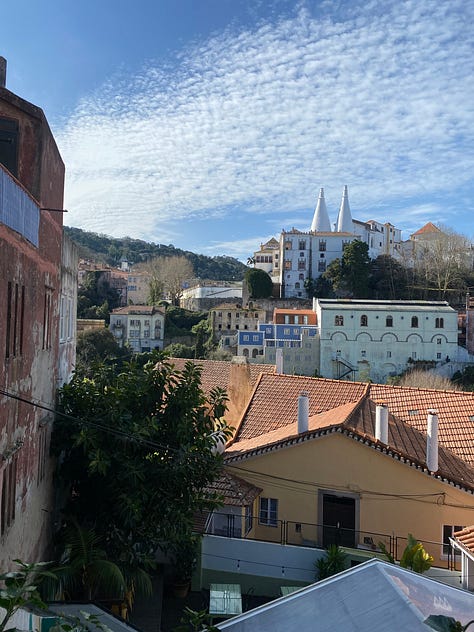
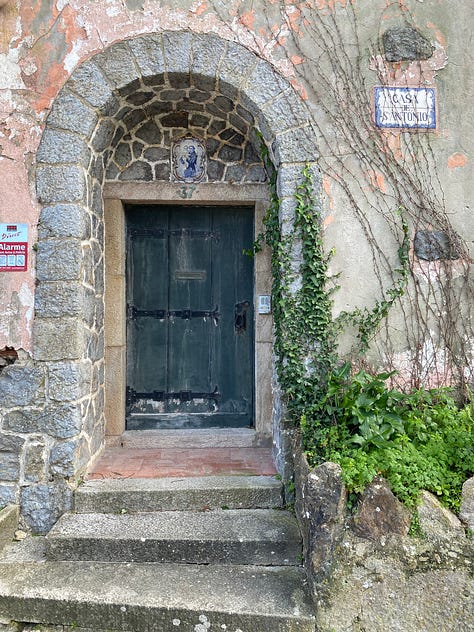
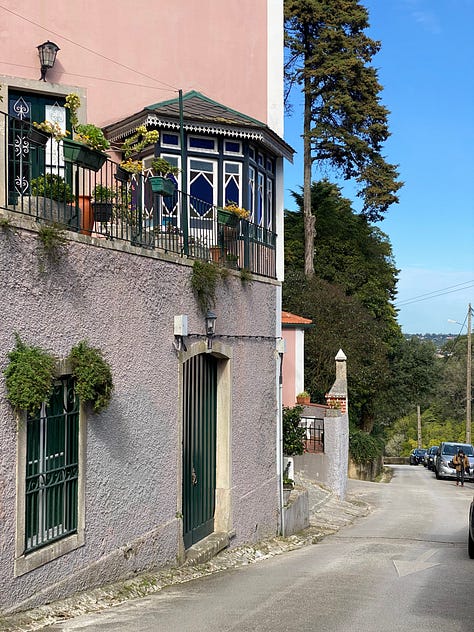
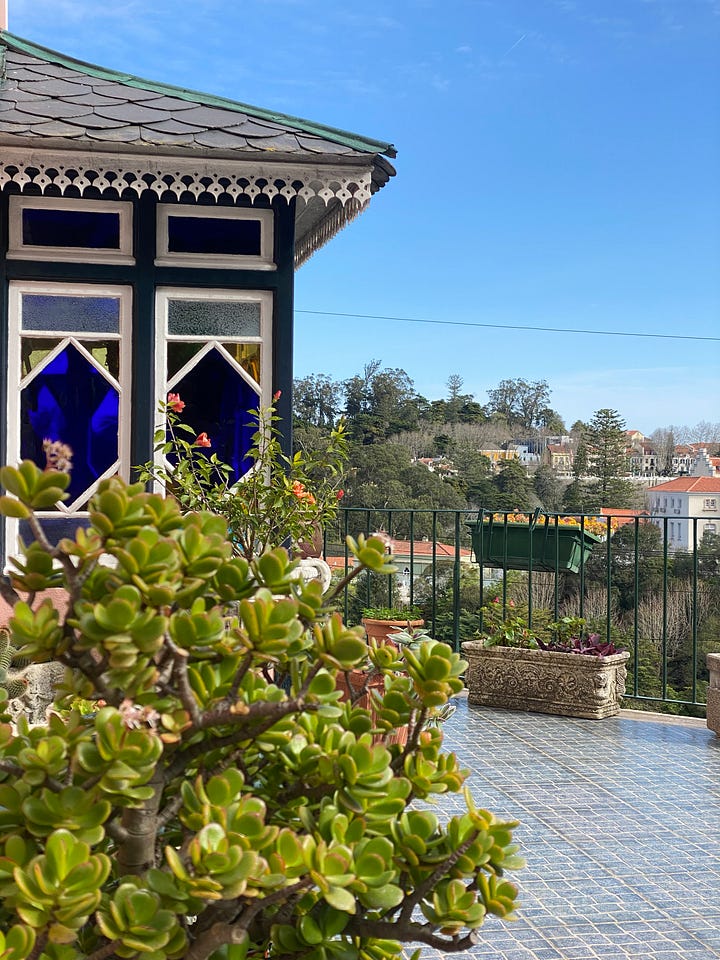
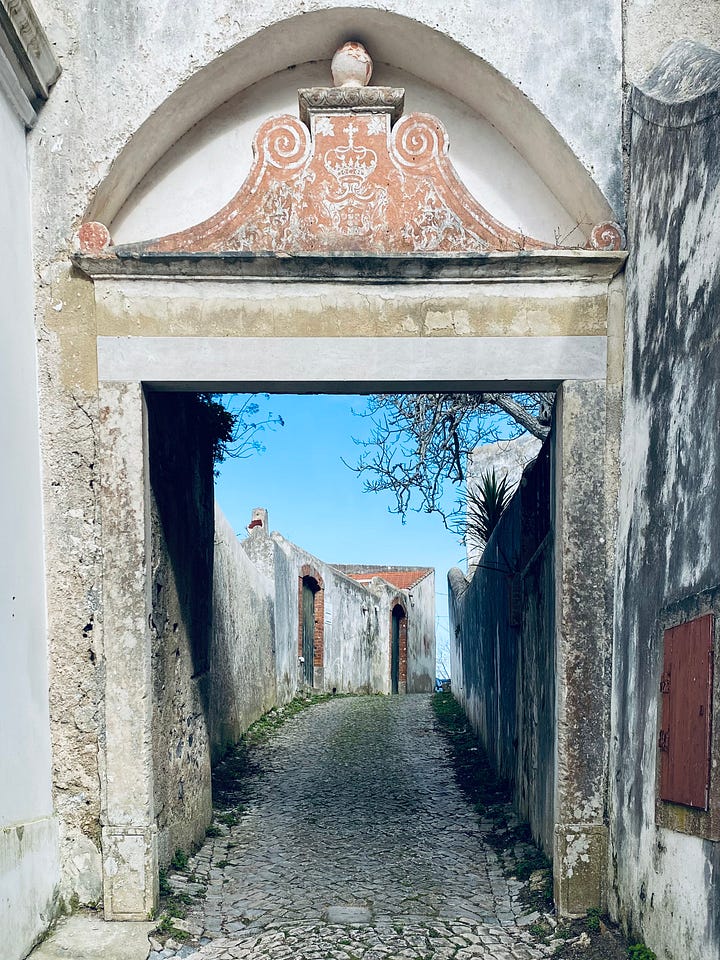

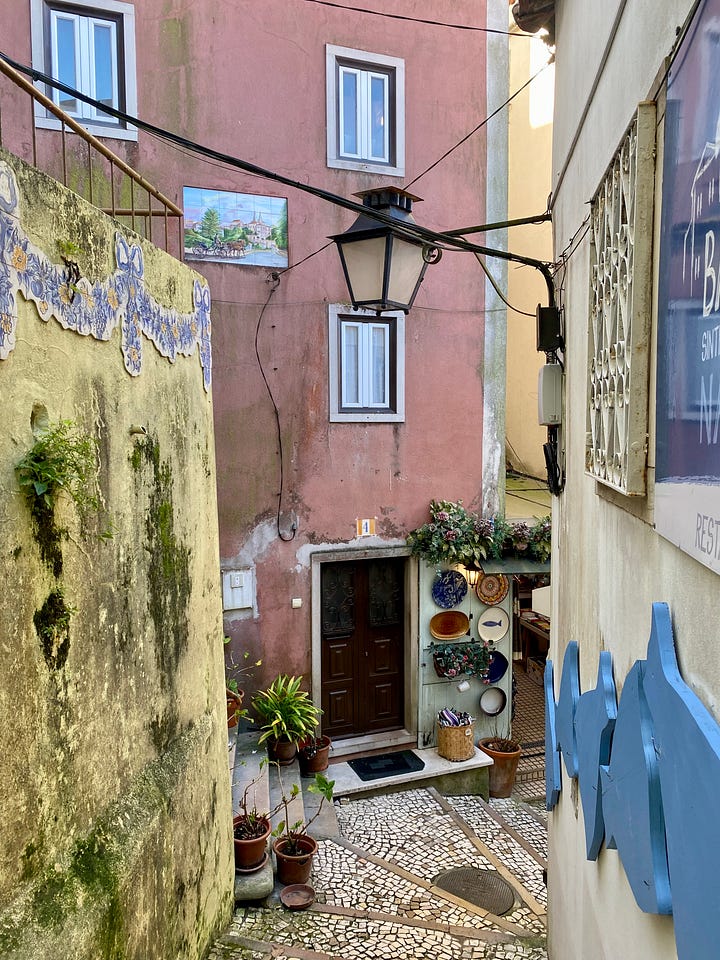
In Lisbon, we took a cruise on the river Tejo which is something I would never have done if I still lived there and yet… it gave me a unique perspective of the city and it was worth it just to see the 25 de Abril bridge from underneath.
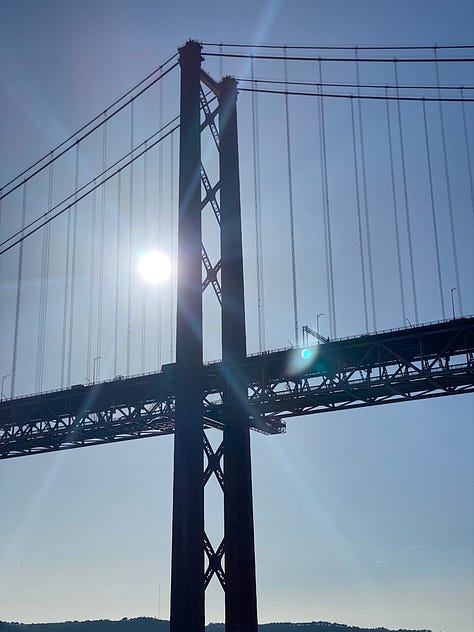
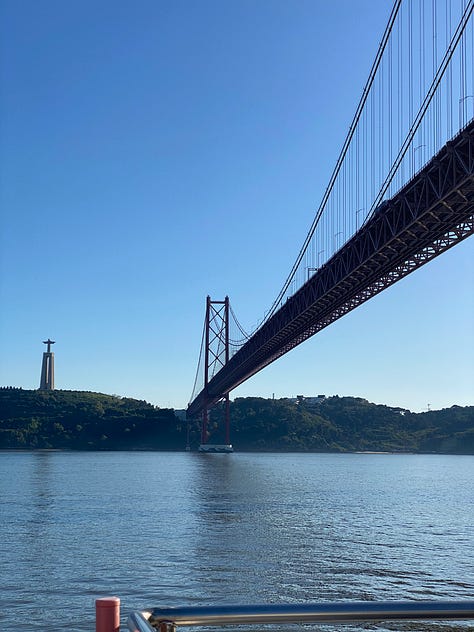
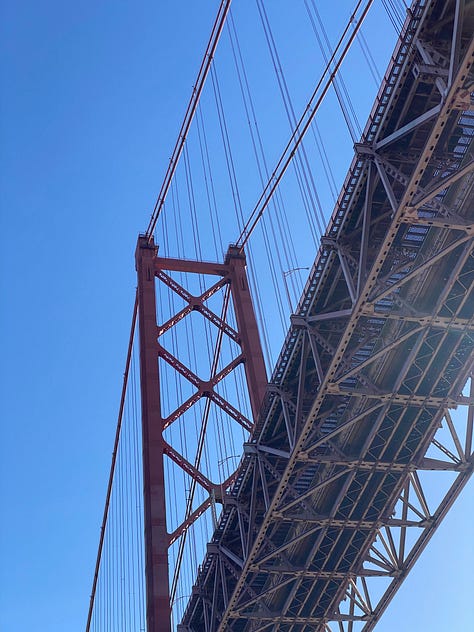
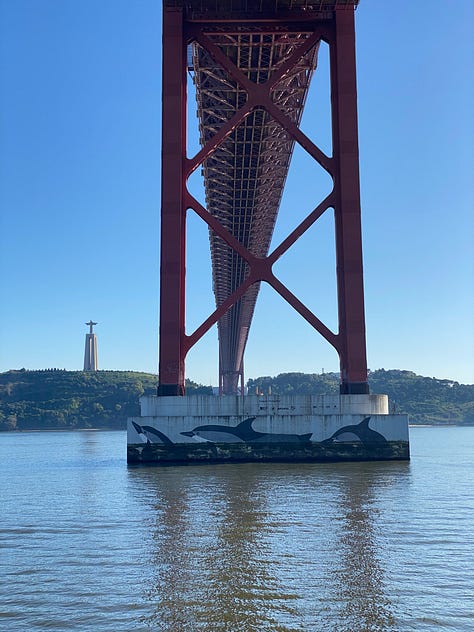

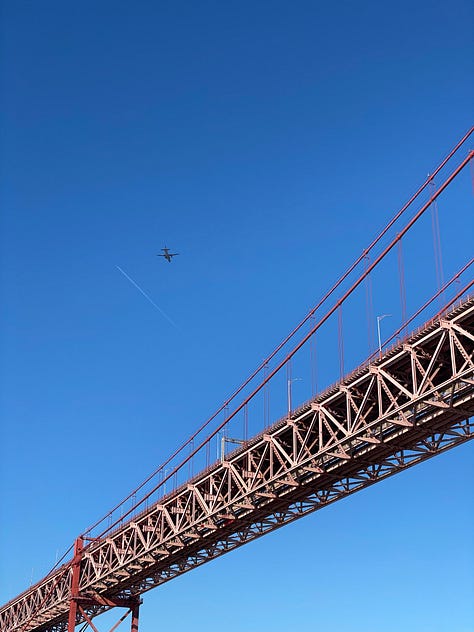
As we travelled around the city, I was on the look out for the tiled Metro walls I mentioned in a previous post, and I attracted curious looks from the locals as I turned my phone towards the often filthy walls of the underground to photograph the tiles. I wonder how many of the thousands of people who daily ride the metro even realise the walls are tiled or notice the different designs or give a thought to their beauty… I can’t be the only one, surely.
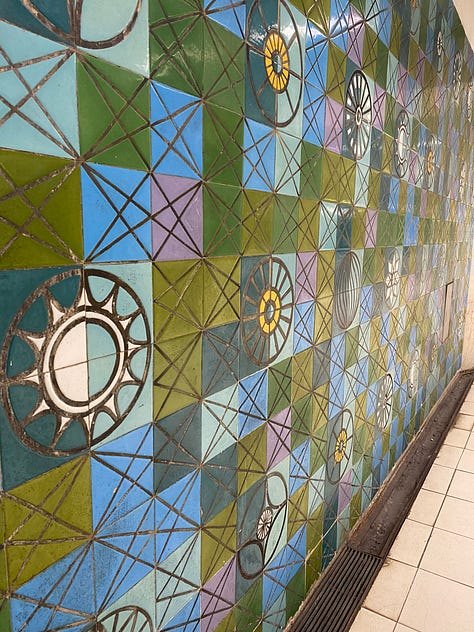

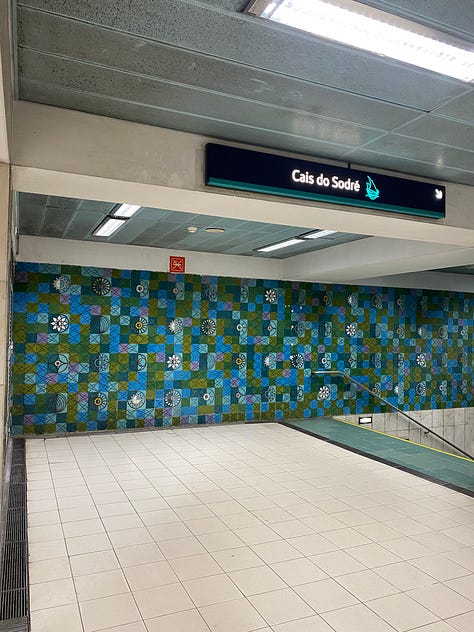
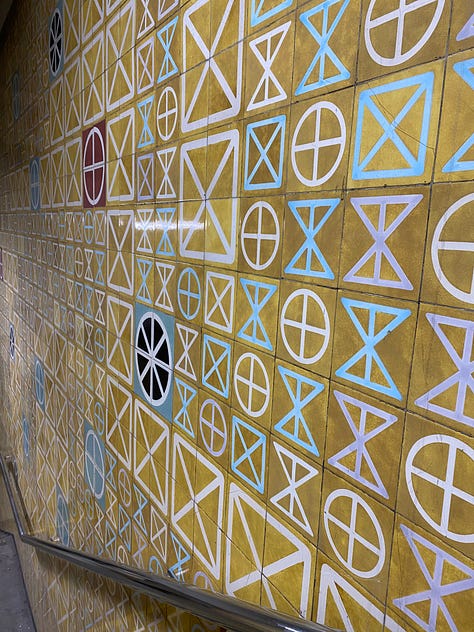
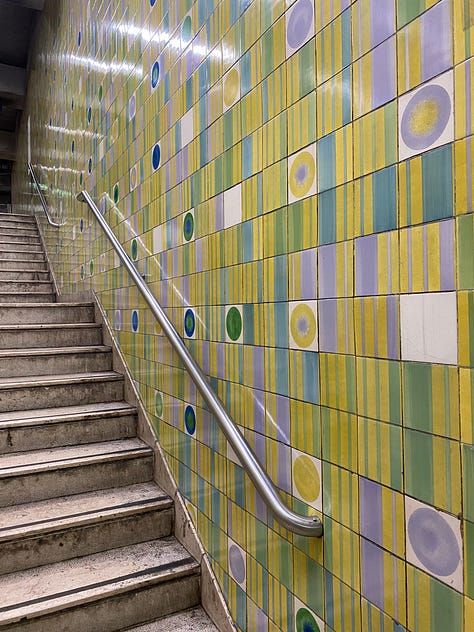
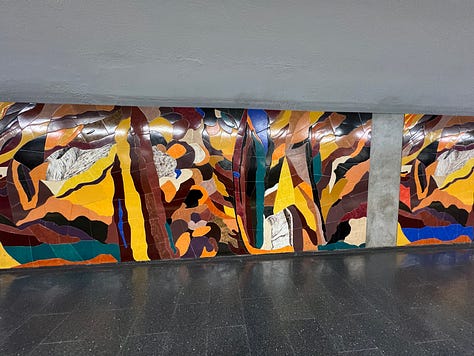

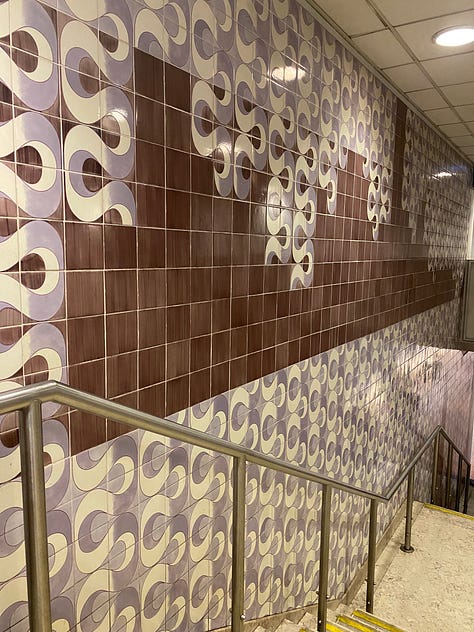
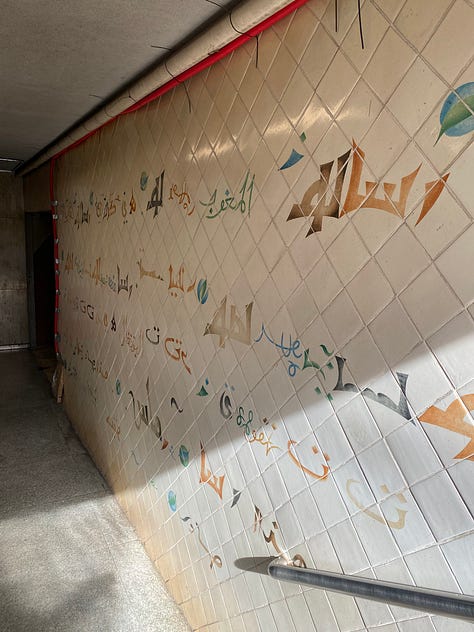
There are many many examples of tile work but we did not go to all stations. I would like to tell you I have a favourite but I have not been able to make up my mind. The designs of Maria Keil and the one below, in Alvalade, by Bela Silva, are high on the list, though.
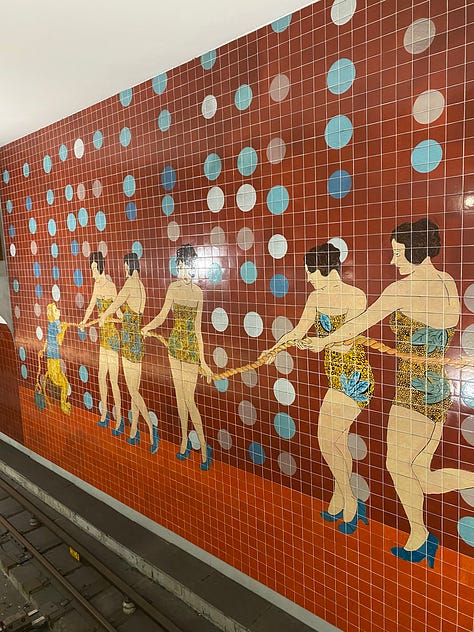
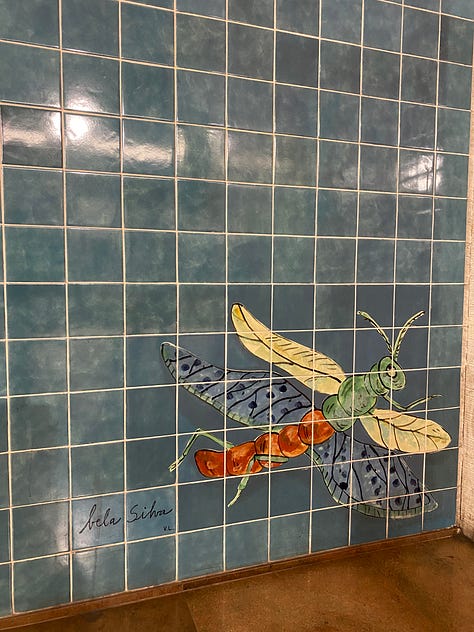
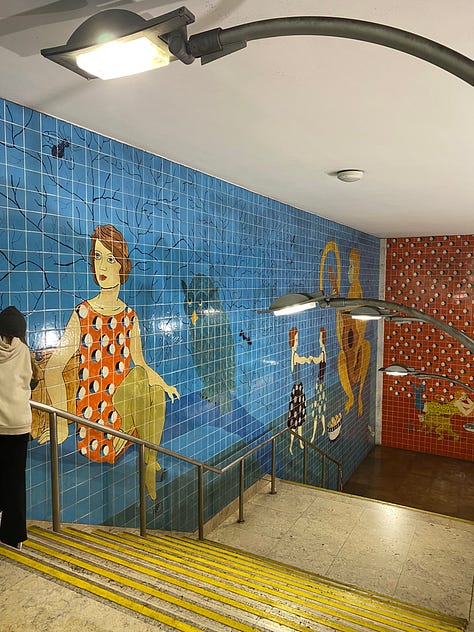
Not content with gaping at the facades in Porto and pissing off some commuters for suddenly stopping to take pictures on the metro in Lisbon, I finally visit the Museu Nacional do Azulejo (I looked for texts in English about the museum and found this article — from which I took the quote you see at the start of this post — if you would like to find out more).
Located in the old Madre de Deus convent, it offers an overview of the history of the azulejo in Portugal, from the XV century to modern days.
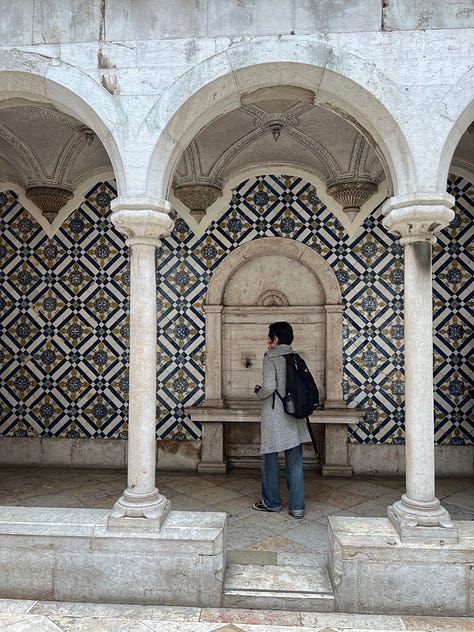


The building alone is worth a visit, though the church is a little too baroque for my taste and one of the chapels or chambers houses several religious relics, namely the bones of saints. Not everyone’s cup of tea, I’m sure.
That aside, the walls are covered in beautiful azulejos and you don’t need to visit the church to get your time’s worth. I took so many pictures it was difficult to choose which ones to post here…
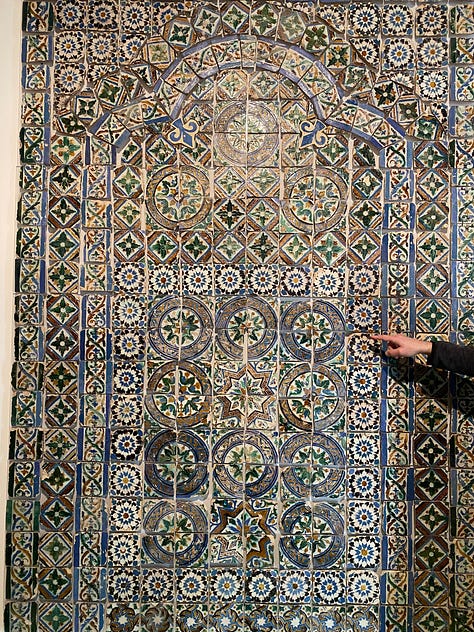

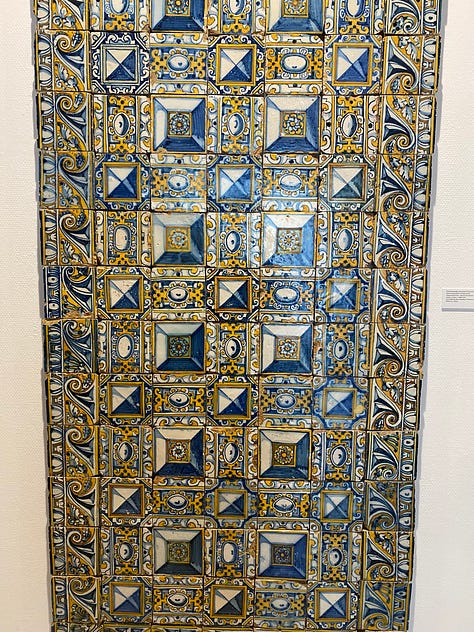
Though, in the beginning, only the church and the nobility had enough financial means to acquire and decorate churches and palaces with azulejos, over the centuries these became more and more common, and from depicting only biblical scenes or historical battles, the azulejo soon became part of commercial warehouses, shops, and there are even some examples of humorist and social commentary usage of this media, like in the Chicken’s Wedding panel below.
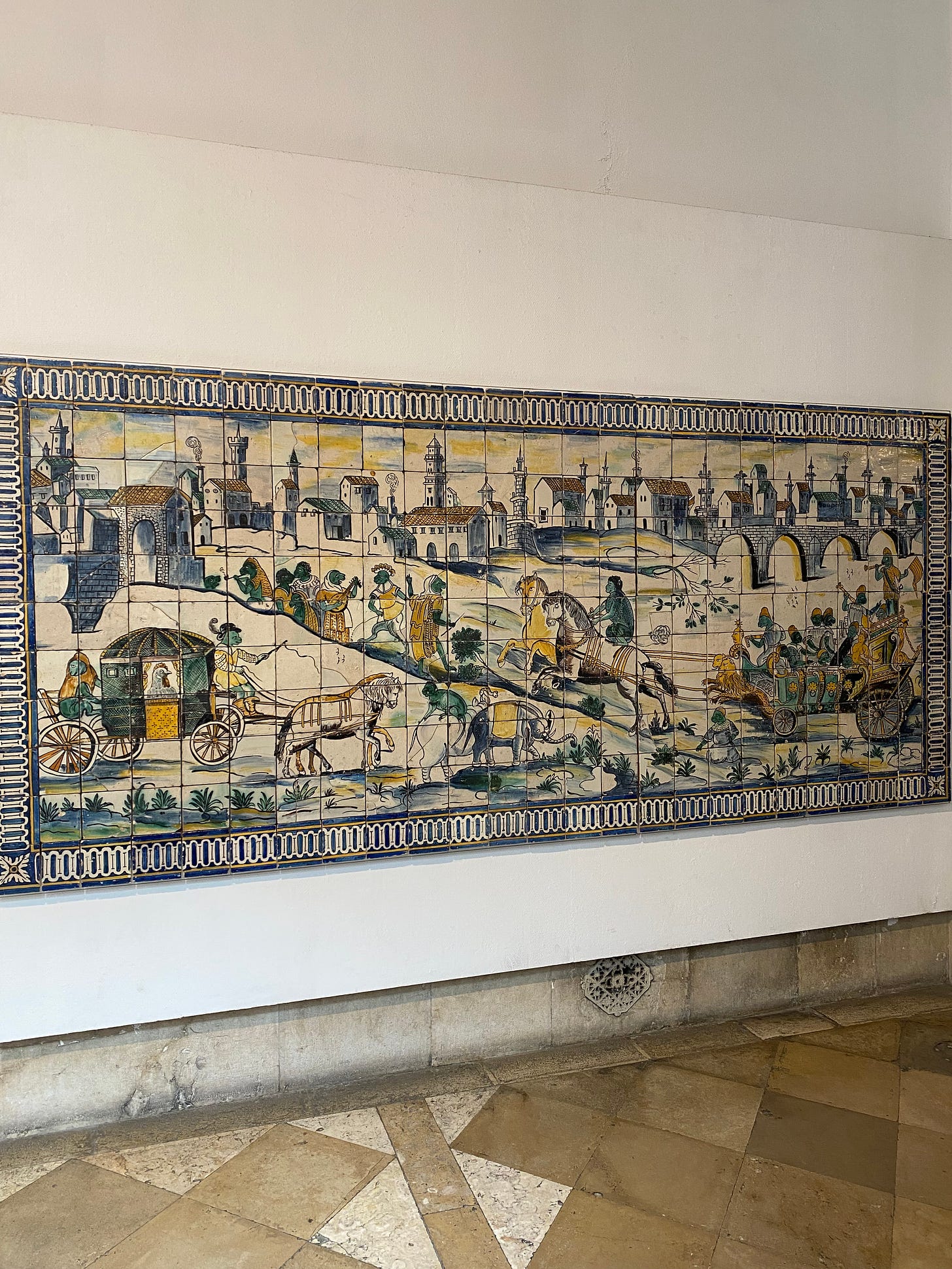
From the baroque excesses to today’s modern designs, this (art) medium is so engrained in Portuguese culture as to be overlooked and taken for granted. Even I have to admit that it wasn’t until our recent visit to Porto that it truly hit me how much azulejos are used everywhere, from grand monuments and churches to shop facades, to people’s homes, inside and out. Somehow, being a true tourist in this Portuguese city, I saw the azulejo through different eyes — com olhos de ver (“with seeing eyes”) as we say — and I was blown away.1
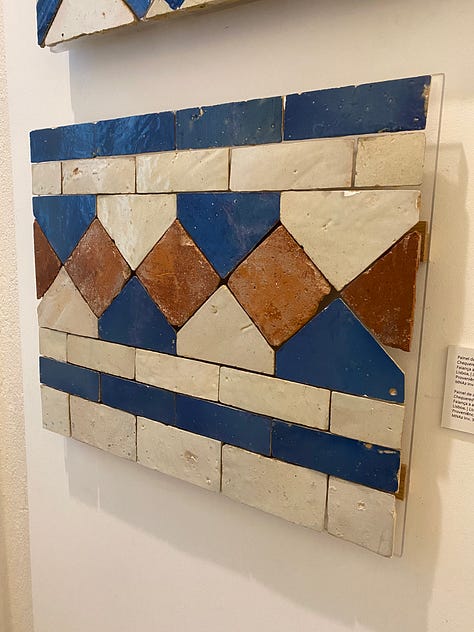
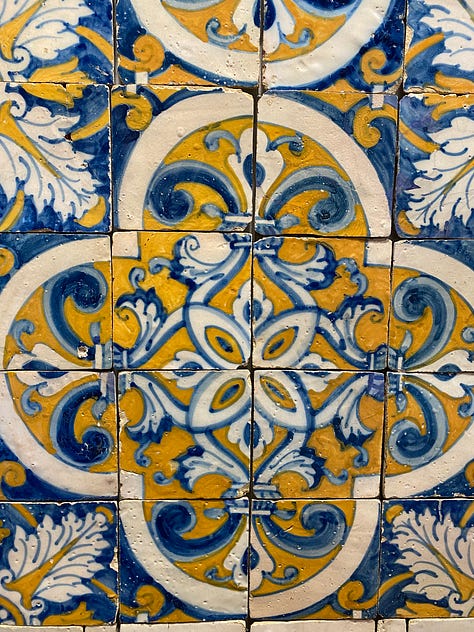
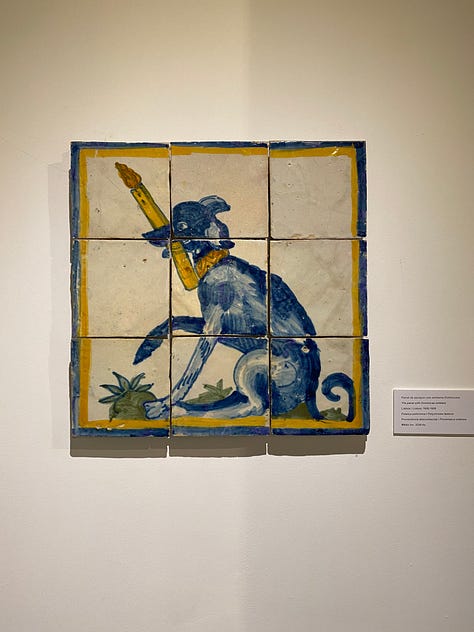
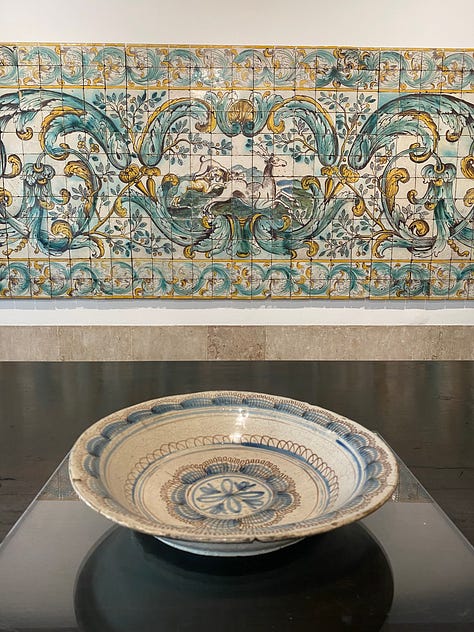
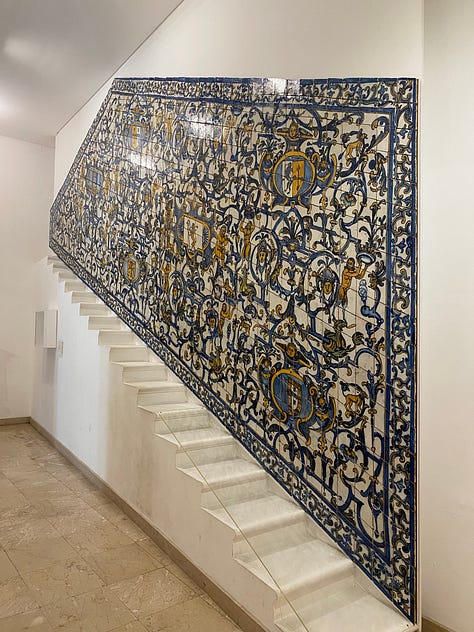
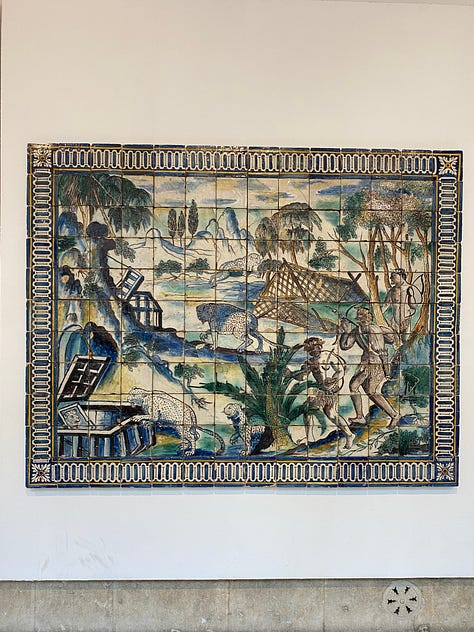
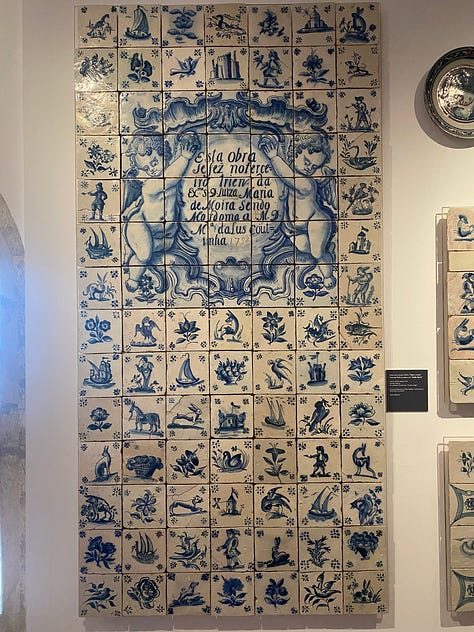
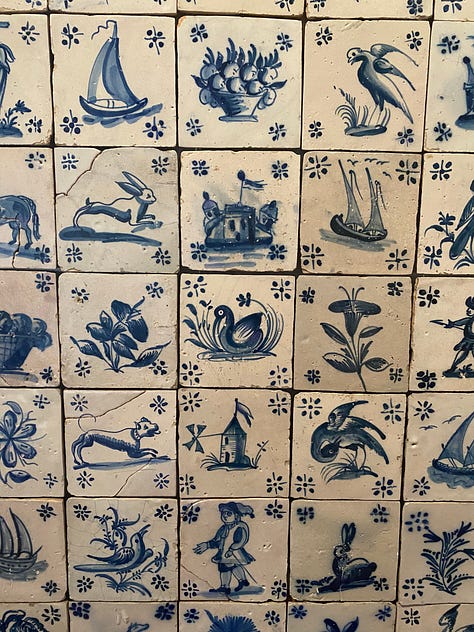

On the top level of the museum, you’ll find modern-day azulejos, many of them from the Viúva Lamego factory, which has been producing tiles since 1849, and whose kilns have fired most (if not all) of the tiles on the metro stations pictured above.
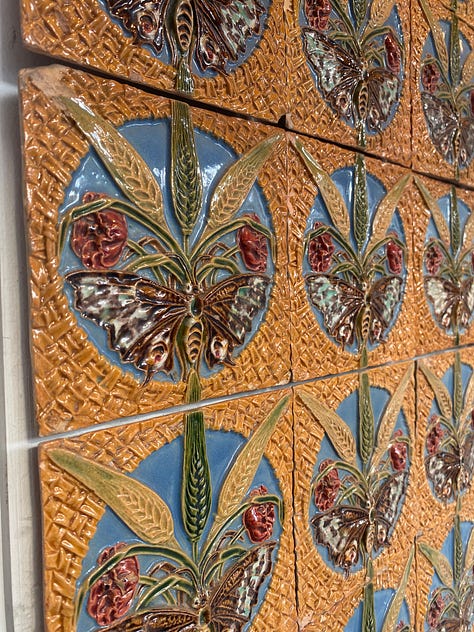
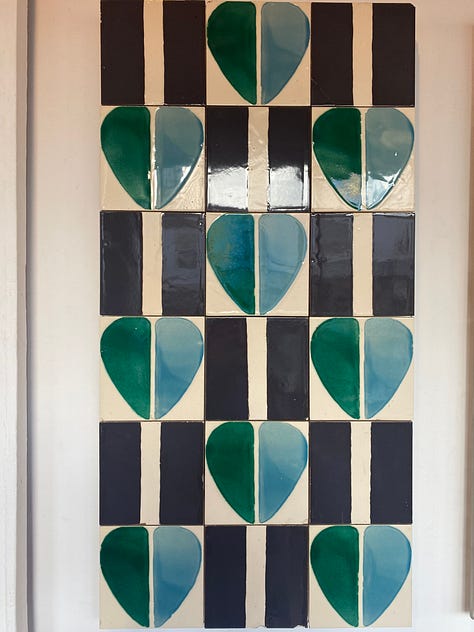
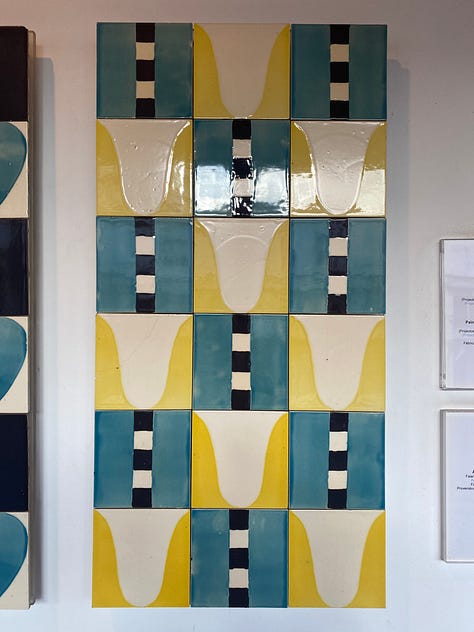
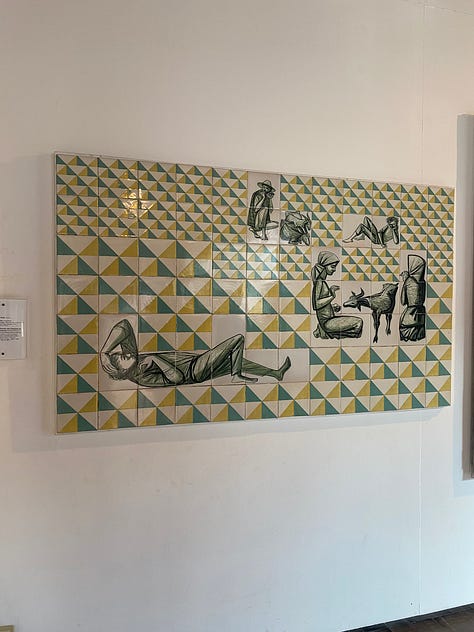
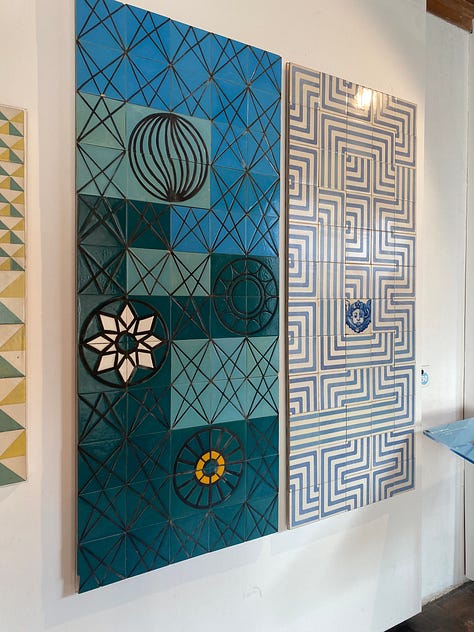
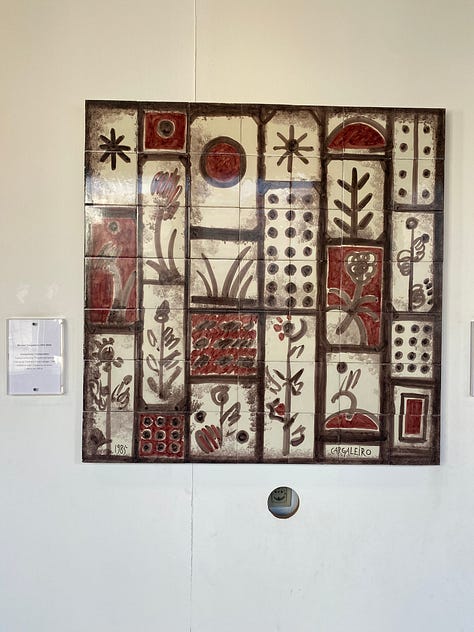
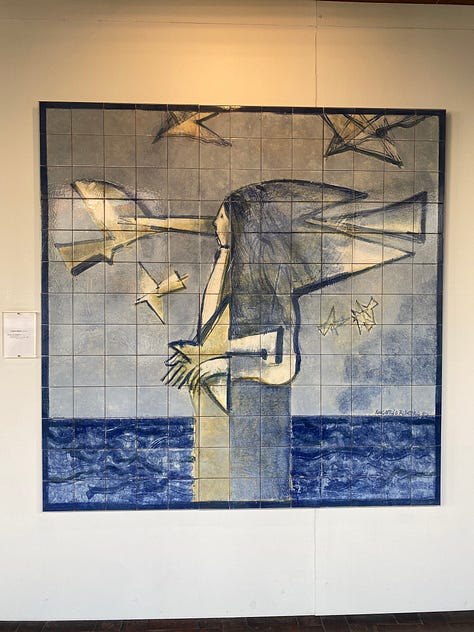
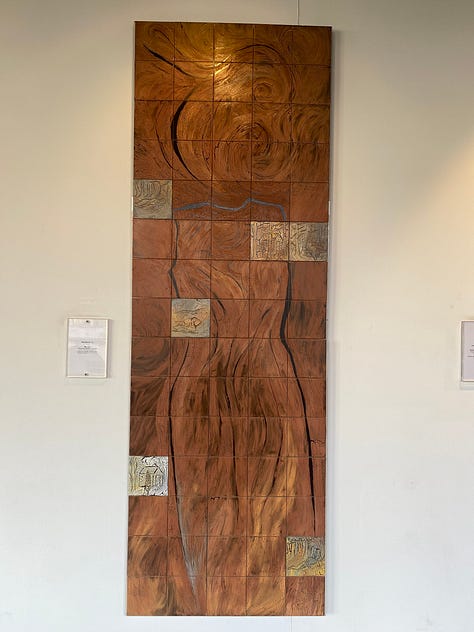
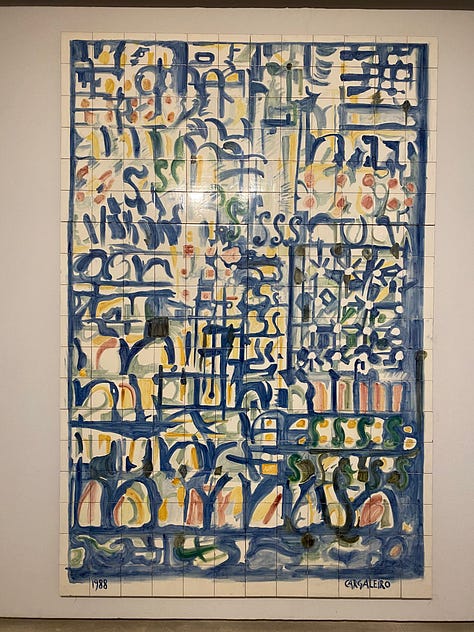
We spent a lot of time at the museum, longer than we thought we would, and in the end we had to rush because I still wanted to visit the Santa Clara market (no, no relation…), see my friend Raquel and buy one of her beautiful Lisbon cyanotypes (you can check out her work here). If it hadn’t been for that, I think we would have spent at least another hour there — next time.
But I still hadn’t had enough, so for our last day in Lisbon, I signed up for a Facade Tiles Workshop at Cerâmica S. Vincente. If you visit Lisbon and have 3 and half hours to spare, I really recommend this workshop. Miguel, who runs it, is a third-generation tile artist (I believe he and his mother currently run the pottery) and he really knows his stuff. He speaks fluent English (in fact, I was the only Portuguese participant, likely something of an anomaly, to be honest) and will answer all your azulejo-related questions as well as your Lisbon-related questions, from how the original al-zulaich were made, to where to go for a truly lisboeta eating (and drinking) experience.
During the workshop, you get 10 small tiles (one standard sized 14x14 tile is “worth” 4 small ones so, like me, for example, you can choose to work on 1 large and 6 small instead). The tiles are bisqued and glazed, ready for the the pigments. I have never worked with this technique — known as majolica — and I didn’t find it easy to apply the watered pigments to the dry and powdery surface. It was a real challenge.
To decorate the tiles, you can choose from several stencils to make your own traditional Portuguese azulejo, you can decide to use the picotado2 technique, either by creating your own punctured design or choosing a traditional one (like I did), or you can go totally free-hand and create your very own azulejo.
I had a great time and the 3.5 hours flew by. When we finished, Miguel told us that everyone who takes this class can, depending on availability, use the space on a per hour basis and paint tiles as they please (I think he mentioned €10 per hour plus the price of the raw glazed tiles, but don’t quote me on that). I may do just that in Summer, when we are next in Lisbon.

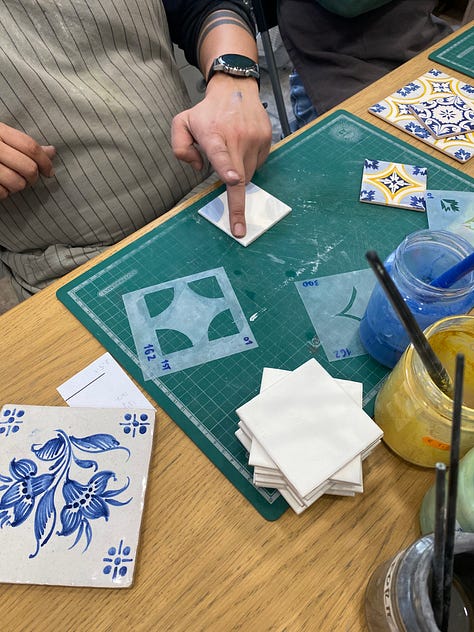
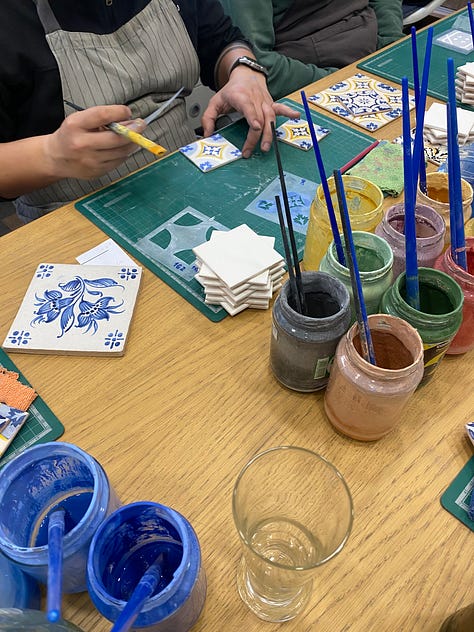

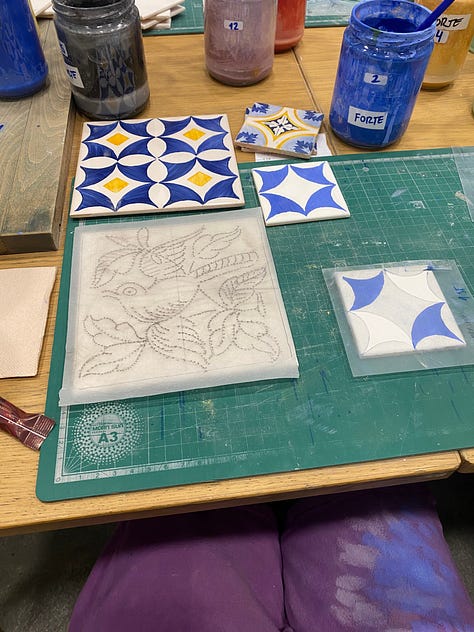
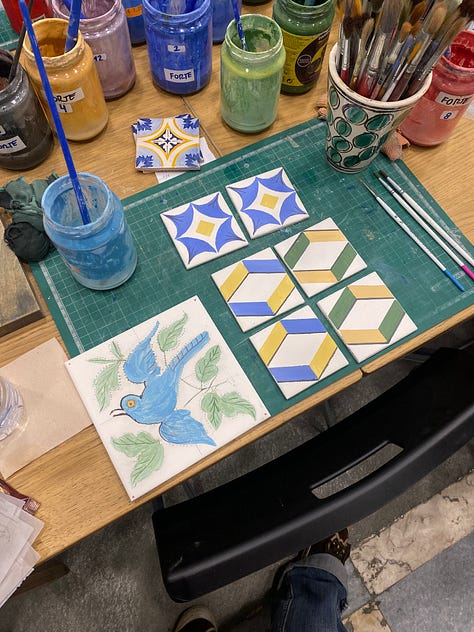
I have already received an email informing me the tiles are ready to be picked up (waiting time is usually three days, though the shop is so busy they will fire the tiles that same evening and have them ready the next day if you are in a hurry, which was the case for one of the couples attending the workshop). My parents agreed to collect them and send me pictures. I chose simple designs as I mostly wanted to familiarise myself with the techniques, but I am still very much looking forward to seeing the fired result, which I will be sure to share here.
Tiles… I didn’t see that coming. Lately, I did start making flat panels, and on the trays I was trying to achieve a tiled wall effect. Still, that’s not quite the same as making actual tiles… I’m still a long way from that but, just for good measure, I decided to take this Domestika course.
This is only the beginning.
Next time I will update you on what’s been going on in the studio. I need to fire the kiln and prepare for the coming workshops. Until then, as always, thank you so much for reading!
Sara
If you would like to see my work
My Etsy store just got a bit of a facelift and I invite you to take a look at the new mugs and trays. I am also on Instagram, though more and more I wish I weren’t.
And if you know someone who would also enjoy reading Clay on my mind, consider sharing it with them.
Sorry for not including any here, except for the first picture at the start of the post. I took many on our visit and will include them in the Porto Postcard, I promise.
Picotar means to pierce or prick with a needle. For this technique, the pattern or drawing is made on tracing paper, flipped and pierced with a thin needle. It is then positioned, “right side” up again, on the glazed tile and “pounced” with charcoal powder wrapped in cotton fabric, in a ball shape, called a boneca, or doll. This leaves a series of black dots on the glazed surface, that you can trace with the brush and fill in with the pigments or oxides. The charcoal markings disappear during firing.




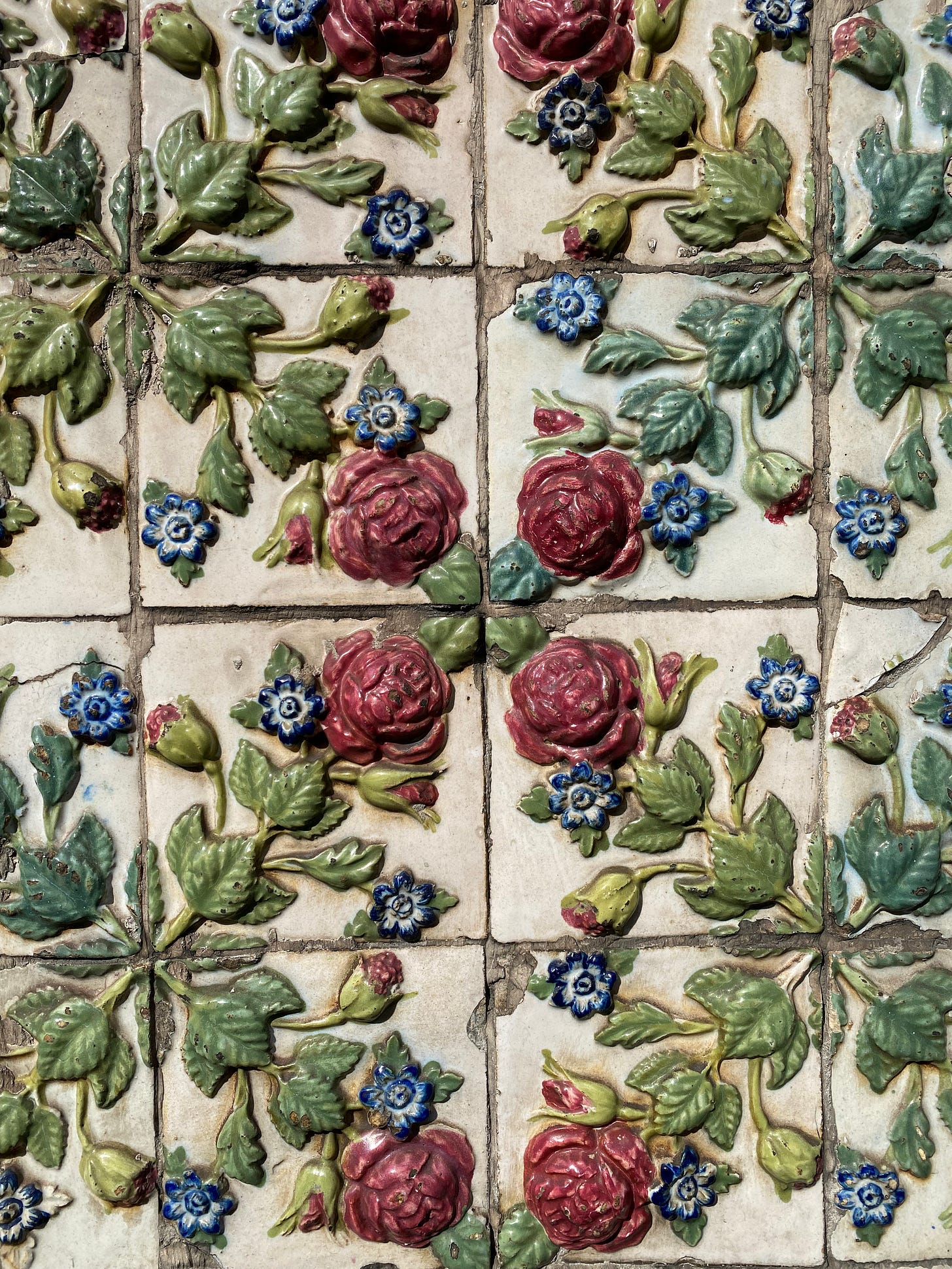
As Portuguese, we should be proud of our tiling heritage. We’ve produced beautiful stuff and we still do. Beautiful post, Sara!
What an absolutely gorgeous feast for the eyes Sara ✨💛 thank you for sharing such beauty c